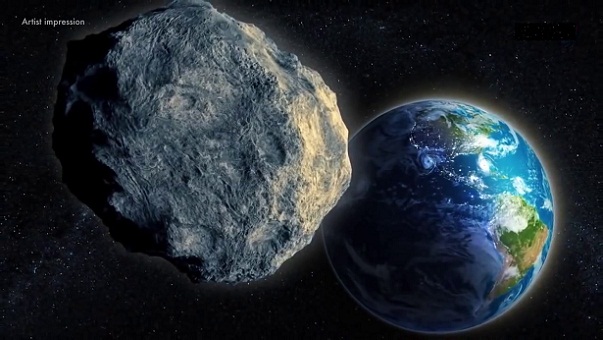

| Online: | |
| Visits: | |
| Stories: |

| Story Views | |
| Now: | |
| Last Hour: | |
| Last 24 Hours: | |
| Total: | |
NASA on ALERT: Asteroid Heads for Closest-Ever Predicted Approach to Earth (+Video)
NASA on ALERT: Asteroid Heads for Closest-Ever Predicted Approach to Earth
The flyby of asteroid 2013 TX68 is the closest ever predicted Earth approach for an object this large.
On March 05, 2016, the asteroid will pass by our planet at an extremely close distance of 11,000 mi (17,000 km).
Asteroid 2013 TX68 is currently estimated to be about 150 feet
(45 meters) across and has an estimated mass of about 130,000 metric tons. The space rock is traveling at about 32,211 miles per hour (51,839 kilometers per hour), relative to Earth.
The asteroid’s orbit is highly uncertain (condition code 7) and it will be hard to predict where to look for it, experts say.
According to NASA, if an asteroid of a size similar to that of 2013 TX68 were to impact Earth, it would release approximately 2.5 megatons of energy in the atmosphere and would be expected to cause regional devastation.
A comparison to the impact potential of an asteroid the size of 2013 TX68 could be made to the impact of a near-Earth object that occurred in 1908 in Tuguska, Siberia.
Known in the asteroid community as the “Tunguska Event,” this impact of an asteroid just slightly smaller than 2013 TX68 (approximately 100 – 130 feet/30-40 meters across) is believed to have flattened about 825 square miles (2200 square kilometers) of forest in and around the Podkamennaya Tunguska River in what is now Krasnoyarsk Krai, Russia.
The asteroid was discovered by the NASA-funded Catalina Sky Survey on Oct. 6, 2013, as it approached Earth on the nighttime side. After three days of tracking, the asteroid passed into the daytime sky and could no longer be observed. Because it was not tracked for very long, scientists cannot predict its precise orbit around the sun, but they do know that it cannot impact Earth during its flyby next month.
NASA’s last paragraph is a subject for discussion of course.
http://lunarmeteoritehunters.blogspot.gr/2016/02/the-latest-worldwide-meteormeteorite_4.html
http://lunarmeteoritehunters.blogspot.gr/
Clips credit: ESA/HUBBLE, ESO & NASA

Image credit: NASA




That’s close!